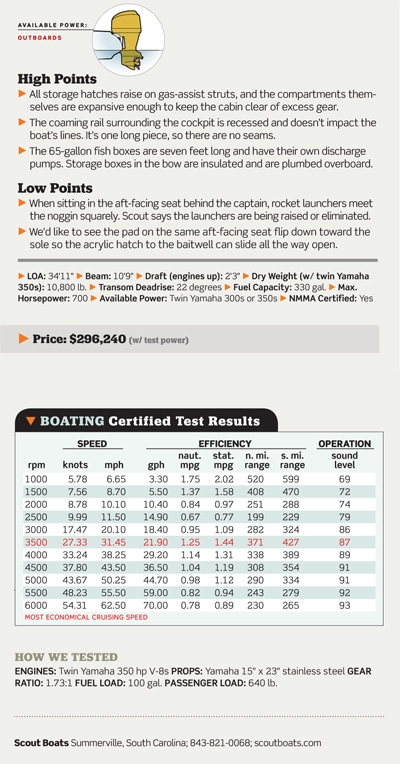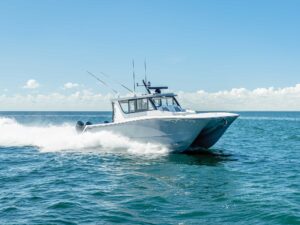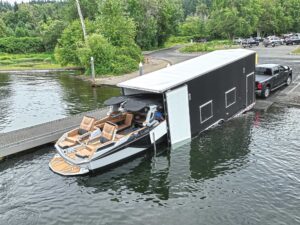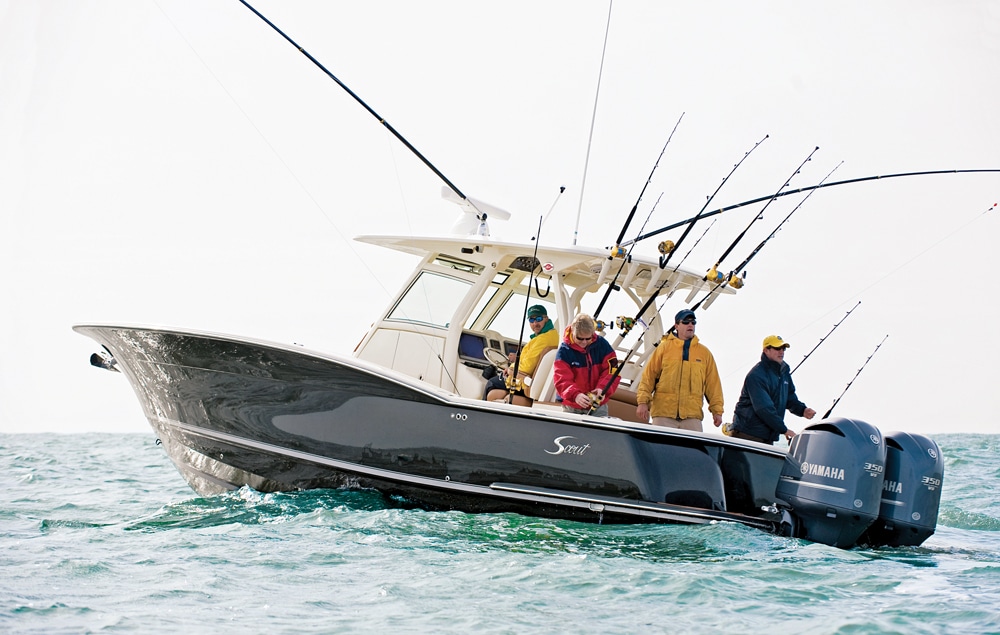
Scout 345 XSF
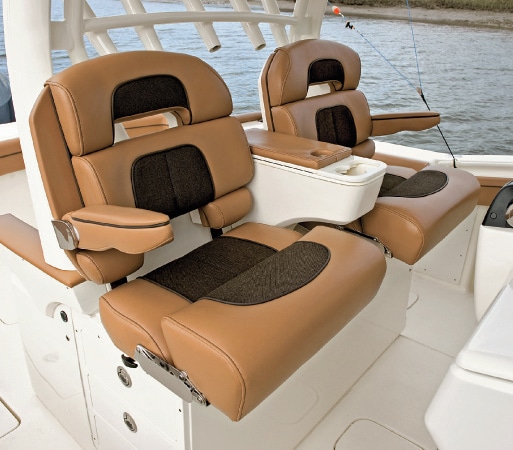
Scout 345 XSF
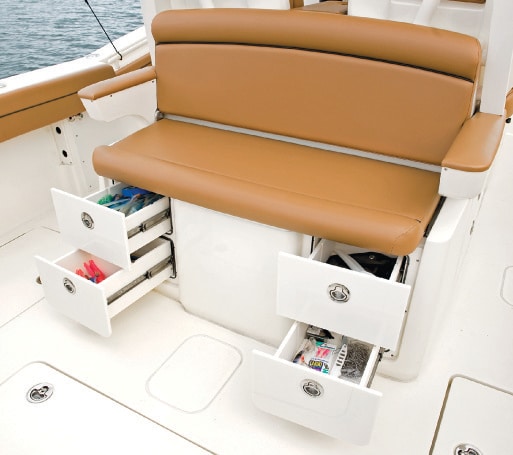
Scout 345 XSF
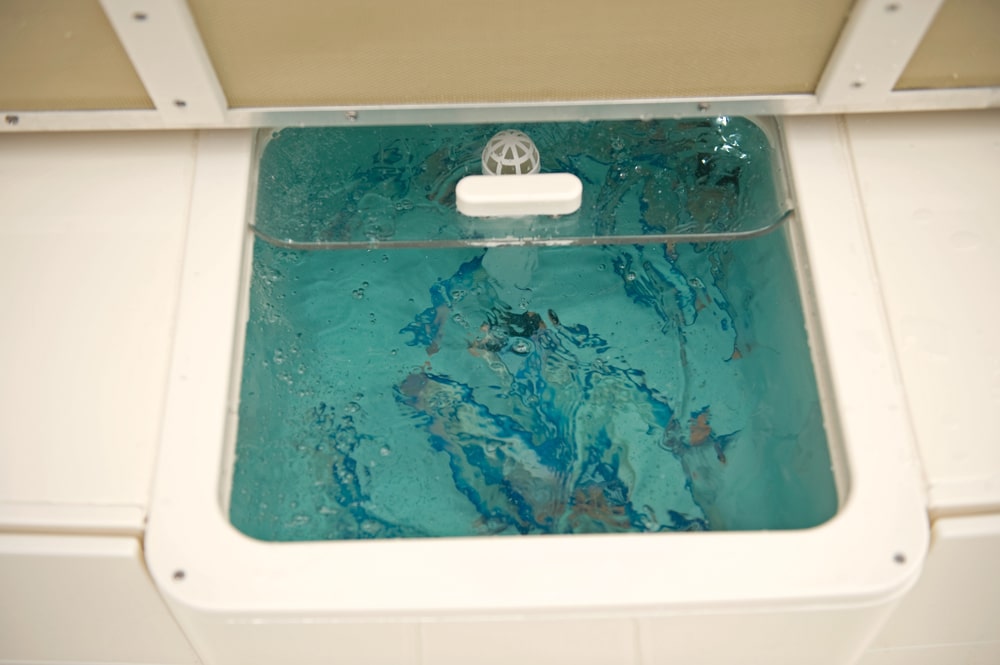
Scout 345 XSF
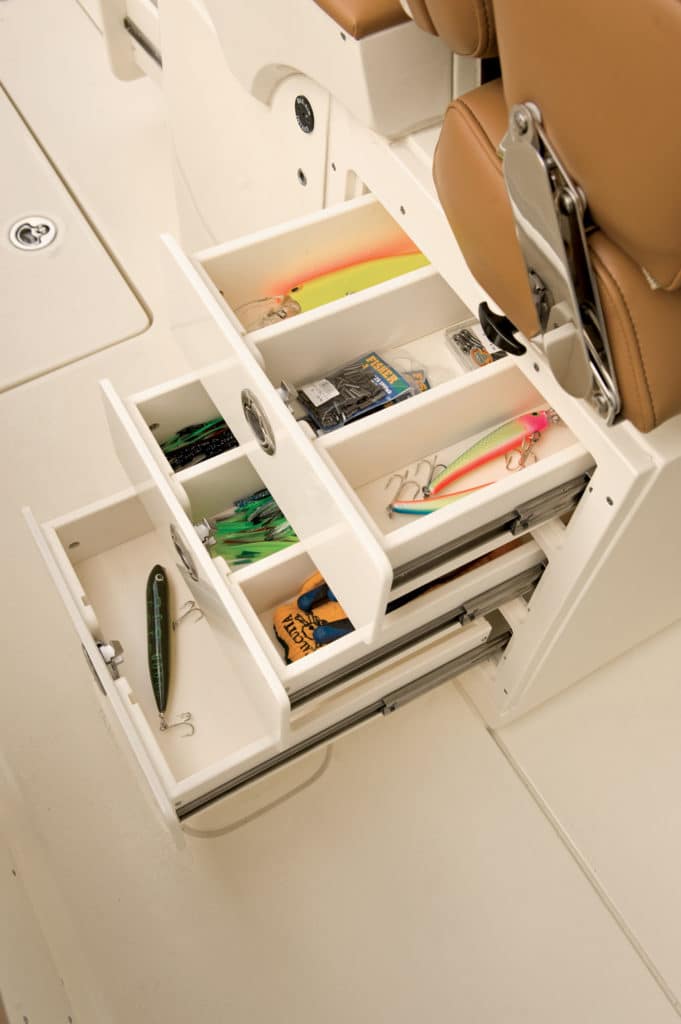
Scout 345 XSF
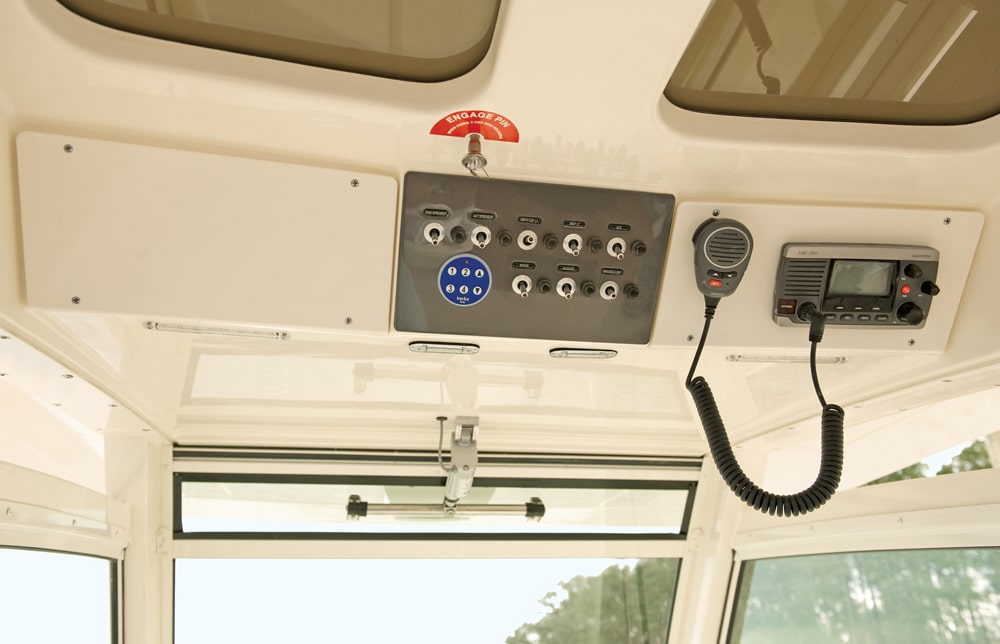
Scout 345 XSF
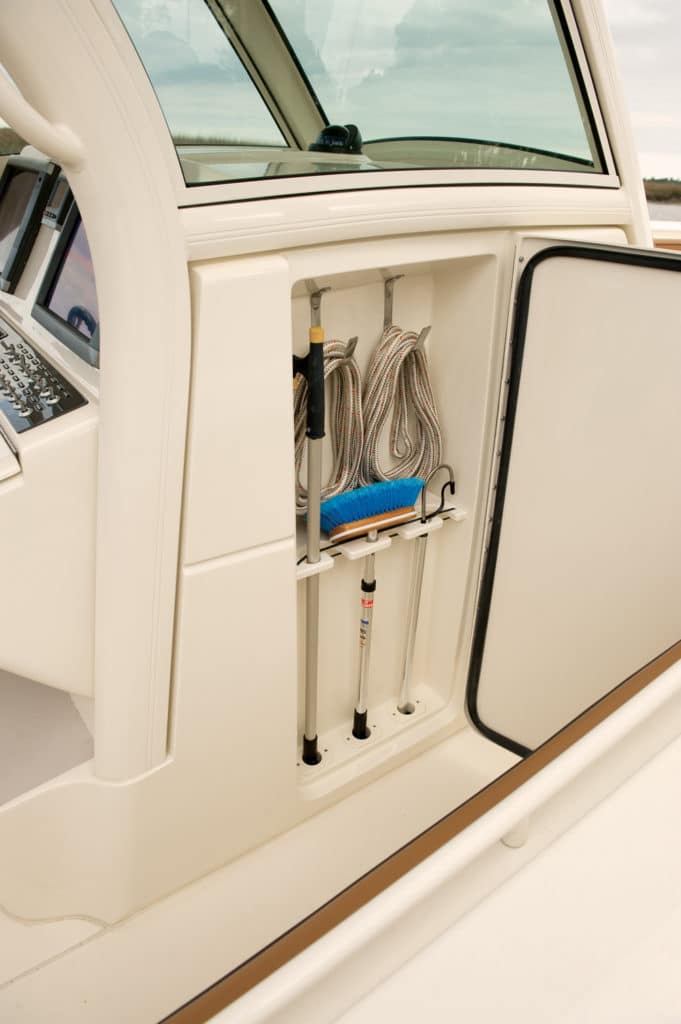
Scout 345 XSF
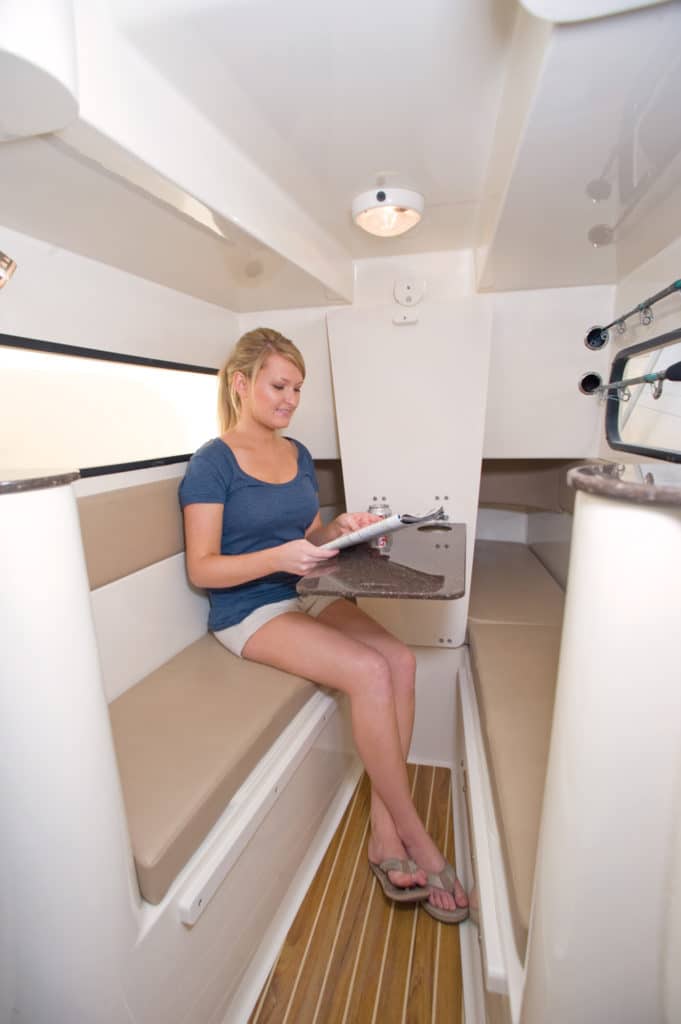
Scout 345 XSF
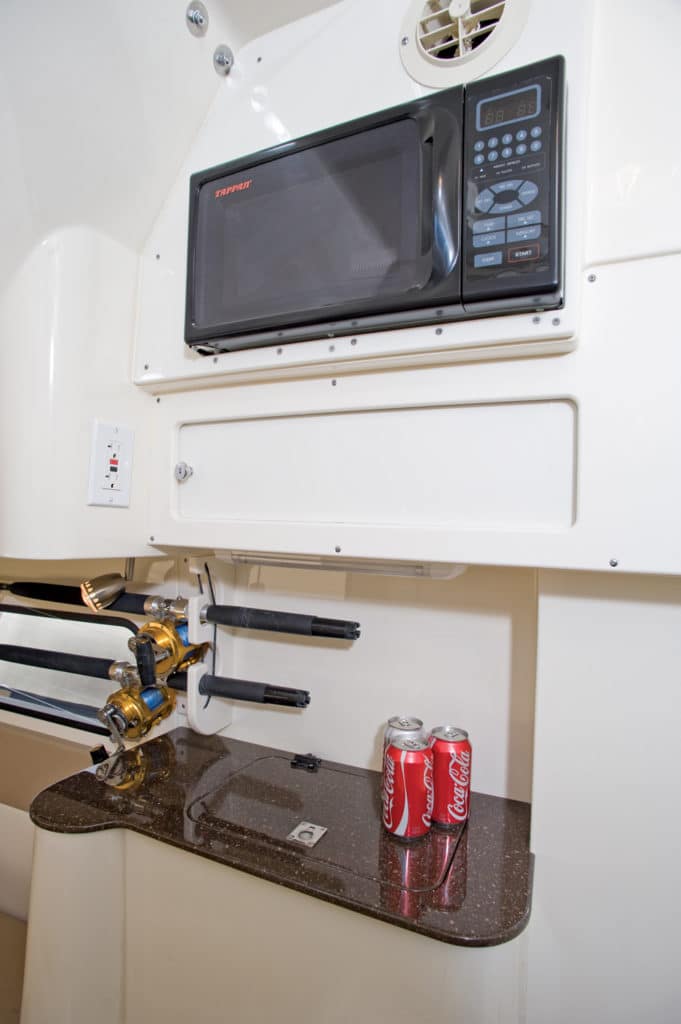
Scout 345 XSF
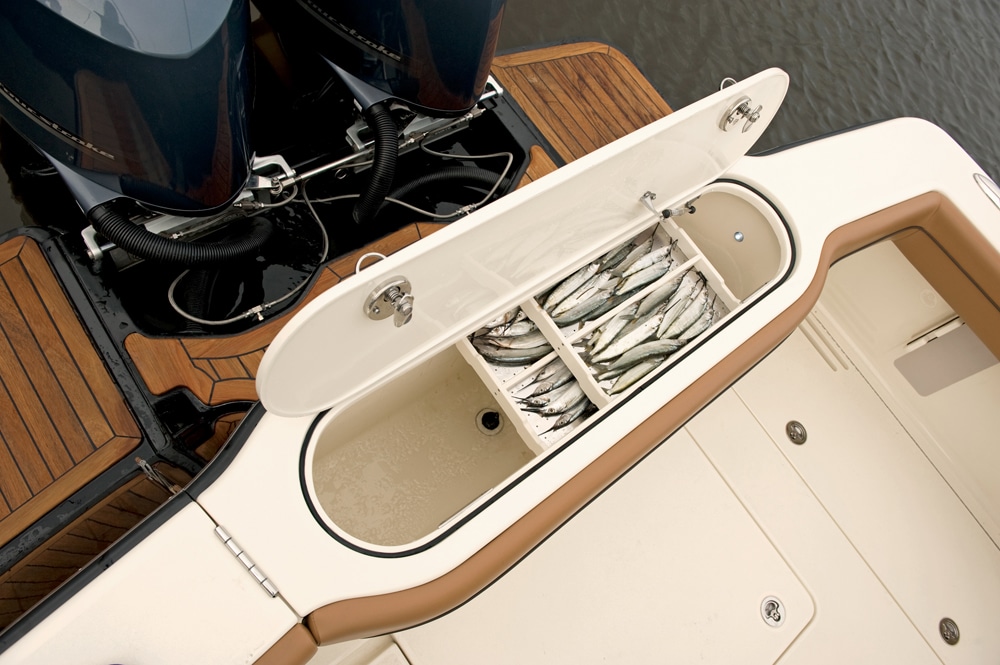
Scout 345 XSF
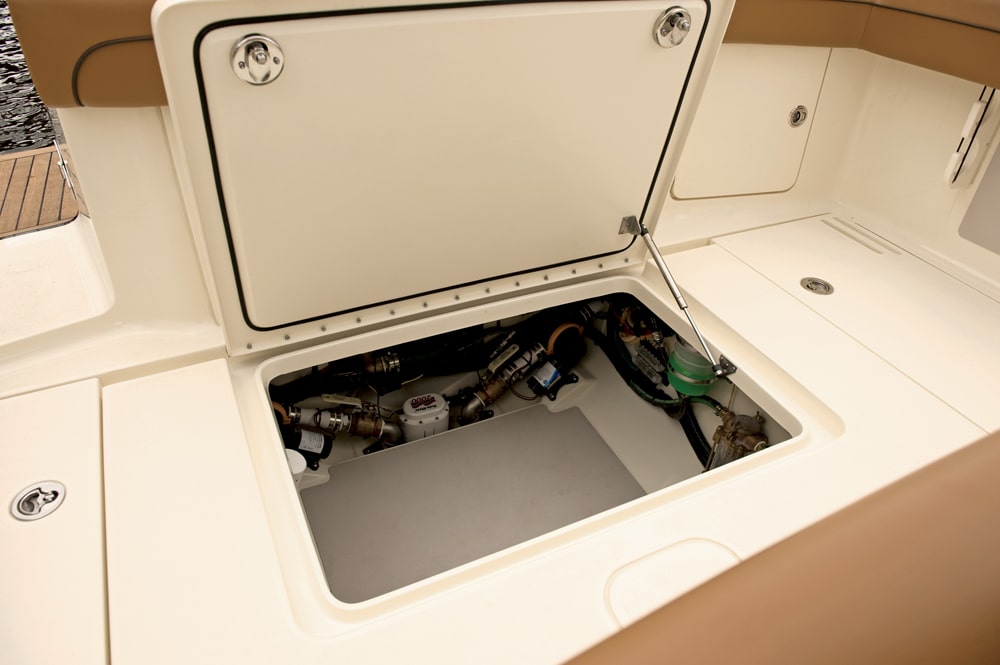
Scout 345 XSF
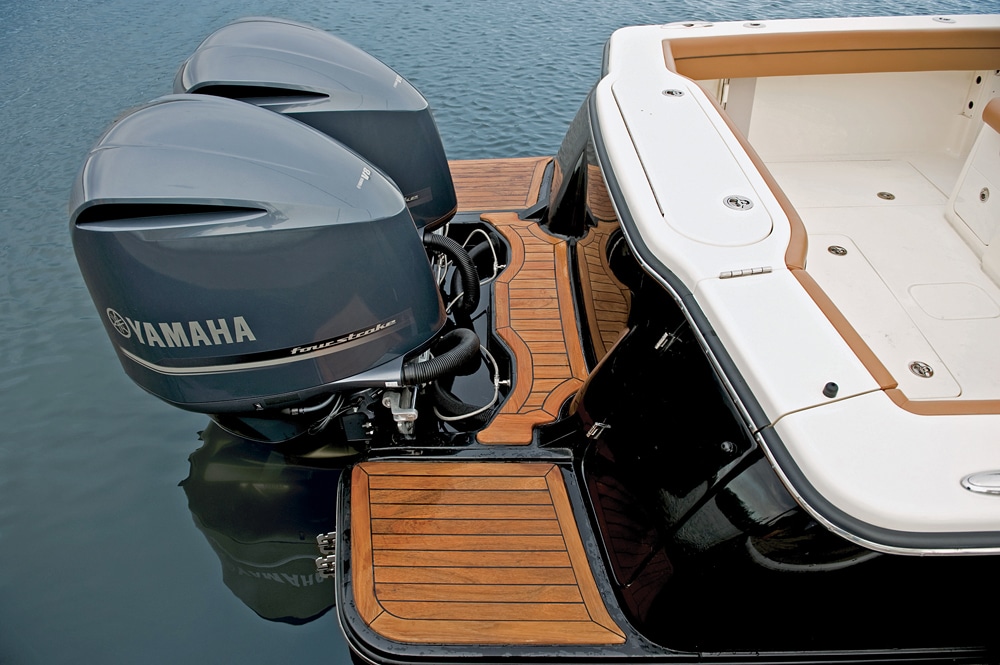
Scout 345 XSF
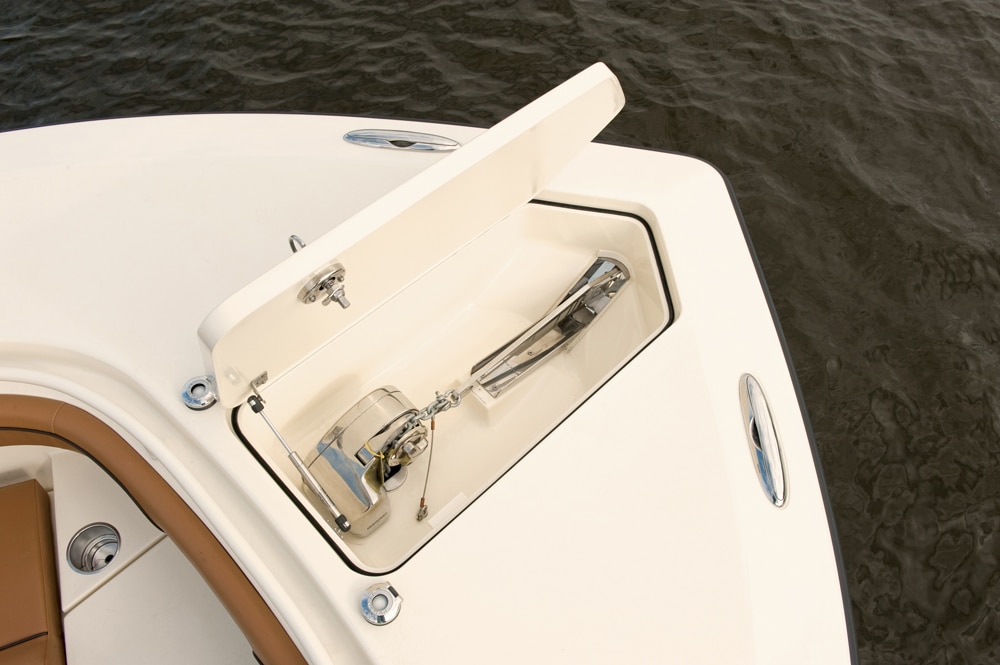
Scout 345 XSF
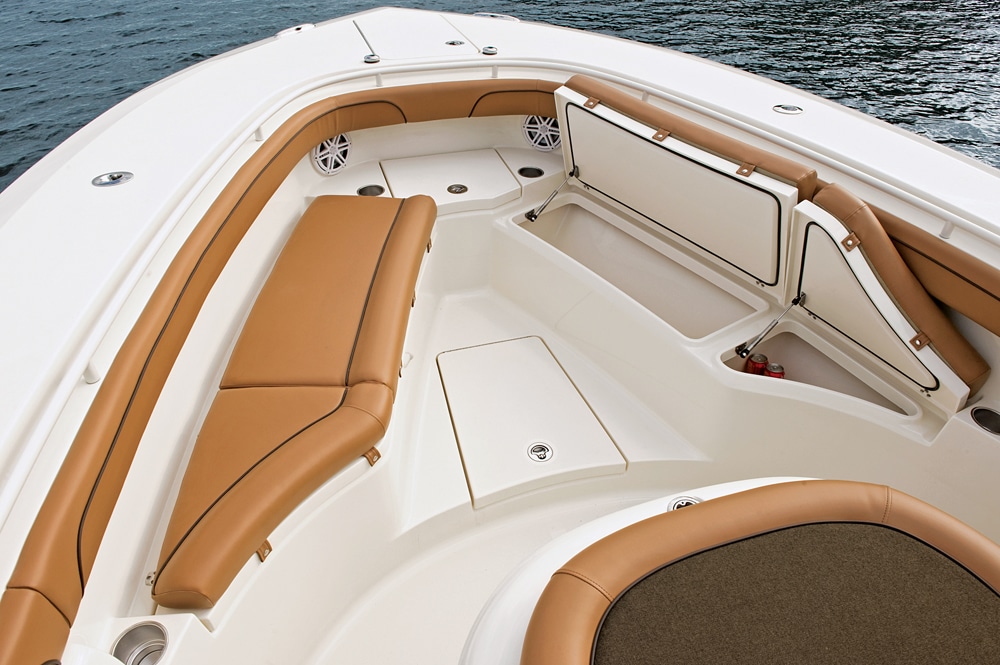
Scout 345 XSF
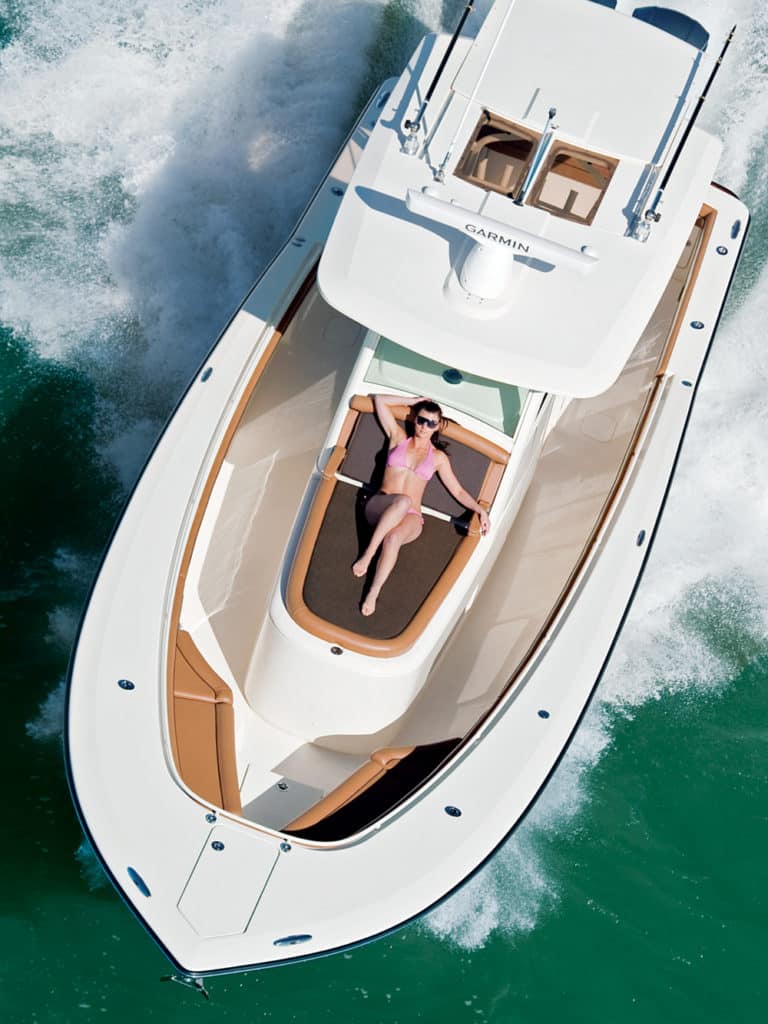
Scout 345 XSF
We were this close to postponing our test of the new 345 XSF. The forecast called for an un-Floridalike 44 degrees, sustained winds of 23 mph with gusts to 30, and three- to four-foot seas even on the lee side of a Gulf island. But the likelihood of a storm was zilch, and, well, we just needed to man up to the real-world conditions for this boat and its potential owners.
The foul-weather gear our five-person crew donned to ward off any blizzard-cold spray turned out to be overkill. The 345 XSF has far-reaching acreage forward of the helm, with a rising sheer line and Carolina-flared bow, all of which kept the cockpit dry as we ran through sporadically spaced waves. It also helped that we were able to duck into the cabin, three and four at a time, to relieve purpling flesh. Technically, this is a center console with a reasonable amount of casting space. But because the head migrates into a forward berth, the entire complexion of the boat is changed above and belowdecks.
Scout had been designing the 345 XSF for two years before we took our first look. The goal was to find a bit of crossover between the fishability of a straight center console and the accouterments of an express. Grady-White beat Scout to the punch when it introduced the Canyon 366 in late 2009. The Canyon has a lower sheer line forward and an upright seat rather than a lounger. It’s also longer by 13 inches and carries nearly a foot and a half more beam than does the XSF (retail on the Canyon is $366,400 with identical power), but it is still the closest competitor.
To differentiate the 345 XSF, Scout’s engineers used traditional tools like tape measures, strings and planers to create the mold by hand, without relying on computer-assisted design (CAD). Interesting, but they prefer this longer process so they can literally keep their hands on every phase of development, from first sketch to preproduction water test.
Much of the spotlight falls on the boat’s wide shoulders and multifaceted bow, where the beam hits 10 feet 9 inches. If you compare the 345 XSF to a no-frills center console, then, yes, the lounger and bow seating do compromise forward fishing space, but when we removed the seat pads around the bow, we were able to stand atop the bases for a better perspective over the playing field. In calmer water, we could have stood on the 28-inch-wide gunwale cap to spot fish.
The wide gunwales along the bow eventually meet at the anchor locker, which is more like a locker room. On top is a compartment for the windlass, and the controls are within arm’s reach in case nobody’s available at the helm. When lifting the bow cushion insert we found a separate compartment for the anchor rode. It’s so cavernous that our test boat carried more than 200 feet of line and chain that looked like a few coiled spaghetti noodles at the bottom of a gigantic punch bowl.
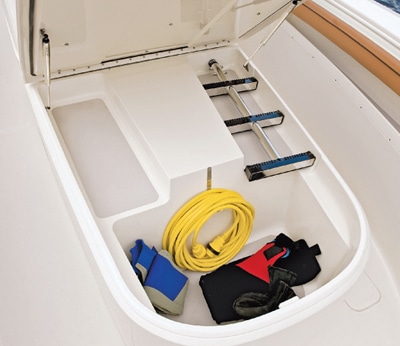
Most of the fishing, of course, will be done off the stern, where as many as 11 rocket launchers and six flush-mount gunwale rod holders can be loaded, and where a 60-gallon fish box/aerated livewell resides across the transom. There’s enough room to move around even though the helm and rear-facing seat are nudged aft to offset the weight of the cabin and to complement the boat’s profile.
We admittedly spent more time in the cabin on this day than at the livewell. The cabin is actually an extension of the head, though we’re told the boat will eventually have a divider between the throne and berth. You could fit five people belowdecks during a storm, and it helps to have the long windows ushering in natural light. Pull down the table and cushion as you would a Murphy bed, and you could sleep two people if they don’t mind an occasional glancing blow. There are galley basics — microwave and sink — and holders for four rods, but for the most part this is a basic retreat from heat, or in our case from the windchill.
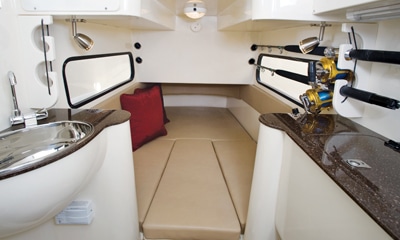
My co-captain and I uttered no complaints about weather from the split helm seat. Windows atop three sides of the console staved off the worst of the cold, and the long hardtop kept glare off the two chart plotters. Our top had the optional extended sunshade, protecting an additional 38 inches of cockpit from the sun — retract it to normal length to free up backswings when casting.
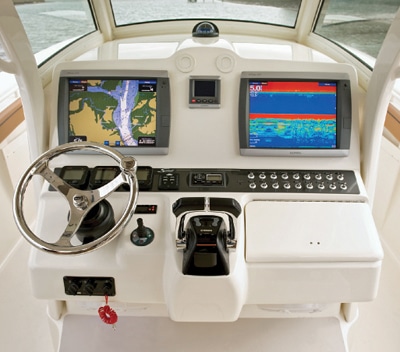
Scout tells us sight lines will be improved. The window frames and raised sheer line of the long bow interfered with our line of vision until we reached 3,500 rpm. Admittedly, the aft-end weight of five people and two Yamaha 350s exaggerated the horizon loss at hole shot. We’re told Scout will raise the helm seats a few inches for a better vantage point. Once on plane, though, the boat was quick to reach 65 mph in the four-foot seas and with the benefit of a tail wind. At that clip, and with nary a drop of spray, we reached our destination before the rest of the crew could call it all off because of the weather.
Comparable model: Grady-White Canyon 366
